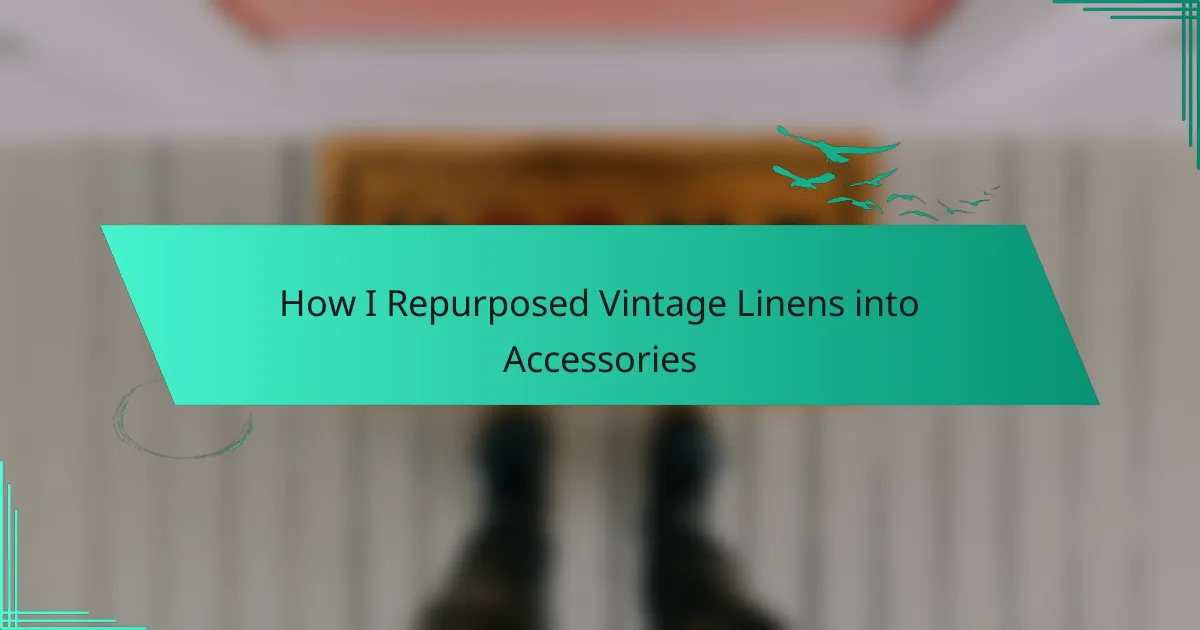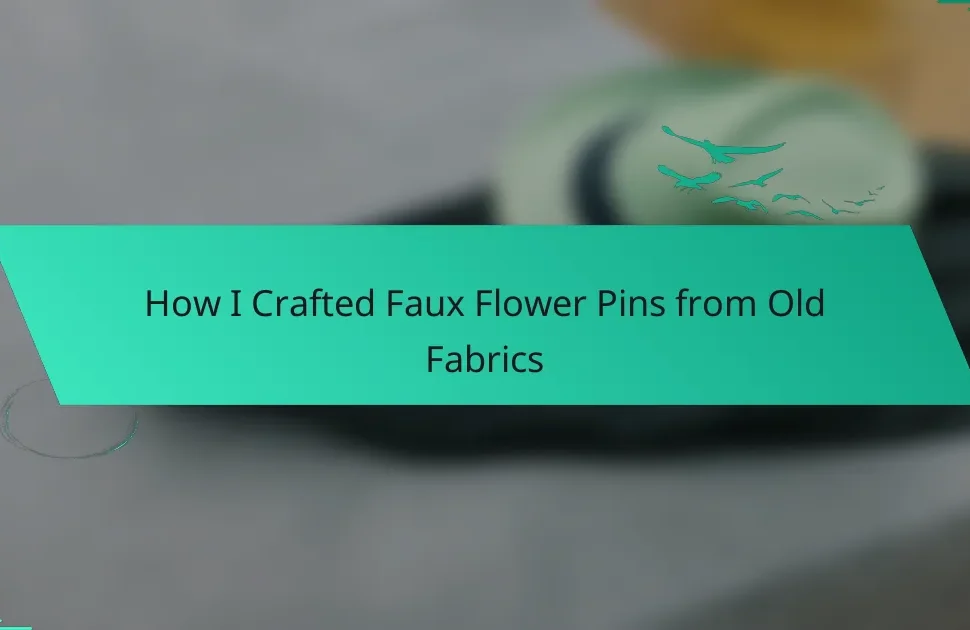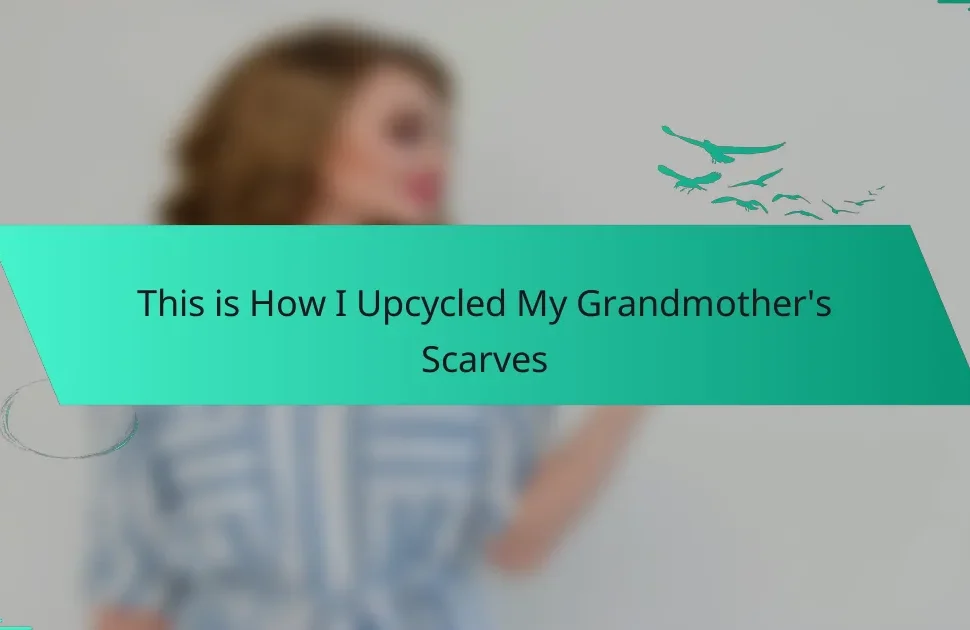Key takeaways
- Vintage linens possess unique textures and historical significance, making them valuable for repurposing in DIY projects.
- Repurposing vintage linens is a sustainable and cost-effective way to create unique accessories, fostering creativity and personal expression.
- Essential tools for DIY projects include fabric scissors, a sewing machine, and a cutting mat, which enhance the crafting experience.
- Successful DIY projects benefit from choosing emotionally resonant materials, experimenting with designs, and exercising patience during the process.
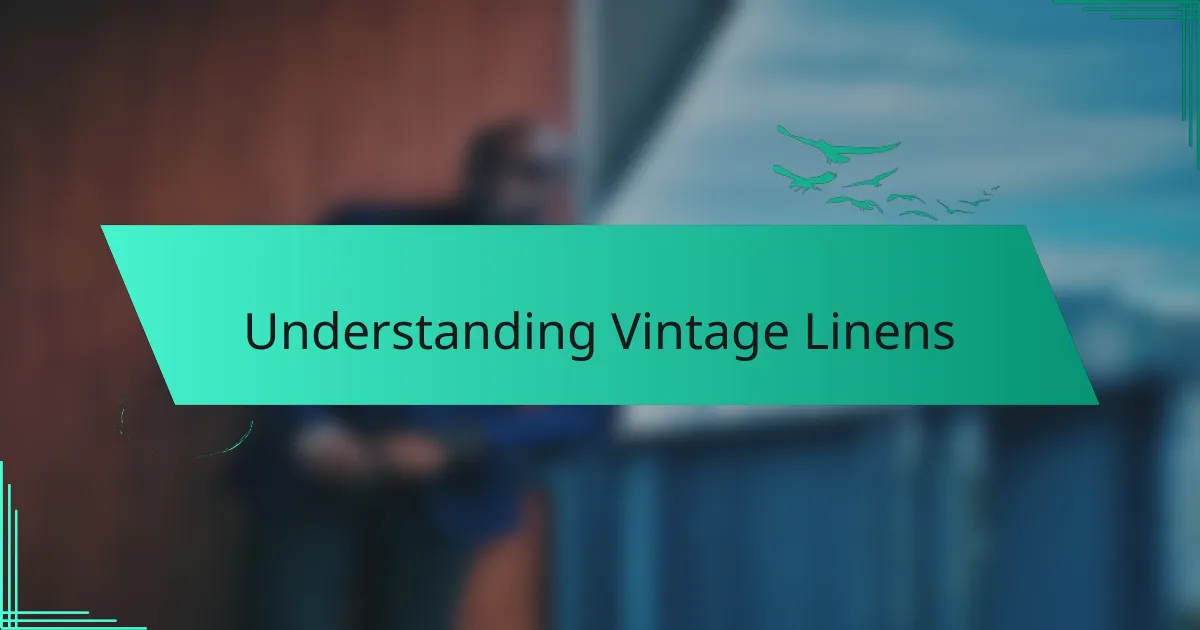
Understanding Vintage Linens
Vintage linens are fascinating pieces of history, often bearing the marks of craftsmanship from another era. I remember stumbling upon a stack of delicate embroidered tablecloths at a local thrift store. Each piece told a story, from the vibrant colors to the intricate stitches—can you imagine the dinner parties they must have adorned?
What captures my interest most is the variety of fabrics found in vintage linens: from crisp cottons to luxurious damasks. It’s incredible how each material offers a different texture and vibe for repurposing. Have you ever felt the weight of a well-loved linen? It’s as if it carries the warmth of the family’s gatherings that once took place.
I’ve discovered that understanding the patterns and styles used in these linens can elevate any DIY project. For example, florals from the 1960s have a completely different aesthetic than the geometric designs of the 1970s. Isn’t it amazing how a simple leftover piece can reflect the trends and tastes of its time? Embracing these details is what truly brings vintage linens to life in new forms.
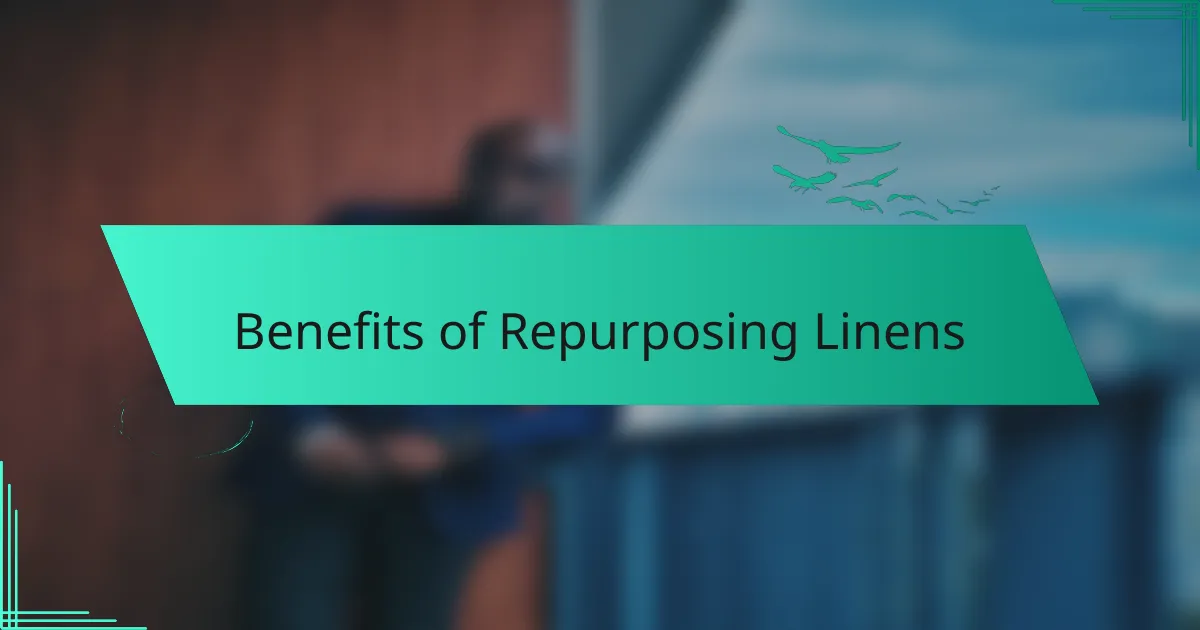
Benefits of Repurposing Linens
Repurposing vintage linens into accessories has brought an entirely new dimension to my creative journey. Not only do I get to breathe new life into beautifully aged fabrics, but I also cherish the stories they carry. Each piece seems to whisper tales of the past, reminding me of the craftsmanship and love that went into creating them.
The benefits of this approach extend beyond mere aesthetics. It’s a sustainable way to express my personal style while reducing waste. By transforming these textiles, I’ve discovered a deeper appreciation for the history they hold, which makes each accessory feel unique and special.
- Sustainability: Repurposing reduces waste and environmental impact by giving old materials a new life.
- Economical: Creating accessories from linens is often more affordable than purchasing new items.
- Uniqueness: Each piece is one-of-a-kind, ensuring that your accessories stand out and reflect your personal style.
- Emotional Connection: Using vintage linens allows for a personal connection to the past, enriching your creations with history.
- Creative Expression: Repurposing fuels creativity, enabling you to experiment with various designs and techniques.

Tools Needed for DIY Projects
When diving into DIY projects involving vintage linens, having the right tools can make all the difference. From fabric scissors to a sewing machine, these tools not only streamline the process but also enhance the creative experience. I remember the first time I cut into a delicate piece of linen; I felt a mix of excitement and a bit of apprehension. Having sharp, quality scissors made it seamless and allowed my imagination to flow freely.
One essential tool for me has been a sturdy cutting mat. It protects my surfaces and makes cutting precise. I also love my portable sewing machine; it’s convenient and perfect for quick projects. Investing in good tools truly makes the process enjoyable and satisfying.
| Tool | Function |
|---|---|
| Fabric Scissors | For precise cutting of linens. |
| Sewing Machine | For easily stitching pieces together. |
| Cutting Mat | Protects surfaces and provides guidance for cutting. |
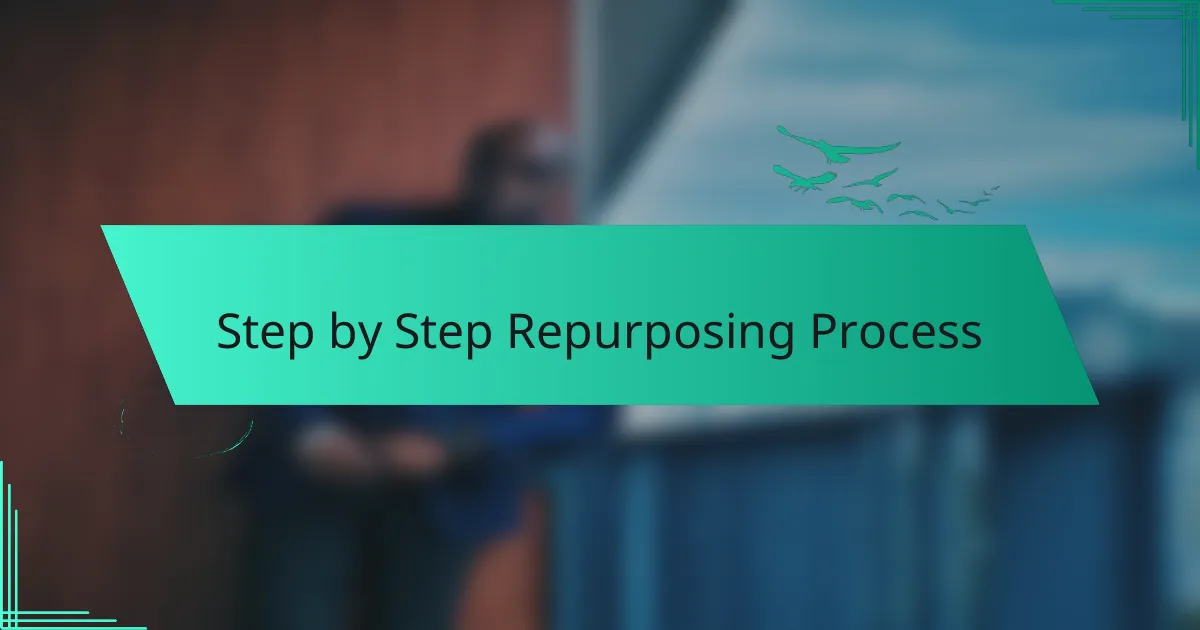
Step by Step Repurposing Process
Once you have gathered your vintage linens, the first step in the repurposing process is to wash and iron them thoroughly. I’ve learned that cleaning these delicate treasures not only refreshes their appearance but also helps reveal hidden patterns that may have been obscured by dust. Don’t you just love it when a little TLC transforms something old into something vibrant again?
Next, I like to plan out my designs. This is where the magic truly begins. I spread the linens out and let my creativity take flight, sketching ideas for accessories such as bags or headbands. It’s a process that feels exhilarating, watching how a simple piece evolves into something unique. Have you ever experienced that moment of inspiration when everything just clicks into place?
Once the designs are set, it’s time to cut and sew. I take my time with this part, making sure to measure and pin everything carefully. The first time I made a pouch, I remember my hands trembling with anticipation as I sewed the final seam. Each stitch felt like a connection to the past while creating something new. There’s a certain thrill in bringing a vintage fabric back into the spotlight, don’t you agree?

Creative Accessories You Can Make
Creating accessories from vintage linens allows for endless creativity. One of my favorite projects was turning a delicate lace-trimmed tablecloth into a charming clutch. The moment I added a vintage button as a closure, it felt like I was giving the fabric a second chance to shine. Have you ever transformed a piece of fabric and felt an immediate connection to its history?
I also love making headbands from colorful embroidered napkins. With just a bit of elastic and some sewing, you can create a unique accessory that stands out. Each headband carries a bit of the past—much like wearing a story that’s waiting to be shared. Don’t you think vintage pieces can spark conversations and bring a touch of nostalgia to modern outfits?
For something a bit bolder, consider turning a large tablecloth into a fashionable shawl. I recall wrapping one around my shoulders during a cooler evening out, immediately feeling the warmth and history it added. It’s a statement piece that not only looks good but also carries a meaningful narrative. Isn’t it fascinating how these repurposed items can become not just accessories, but also treasured heirlooms?

Personal Journey in Repurposing
When I first stumbled upon a box of vintage linens at a thrift store, I was overcome with nostalgia. Each piece told a story, invoking memories from a bygone era, and I felt compelled to breathe new life into them. This personal journey of repurposing has transformed not only these linens but also my perspective on fashion and sustainability.
I’ve found that the process isn’t just about creating unique accessories; it’s also deeply rewarding. Taking something that may have been discarded and turning it into a beautiful, wearable piece is a true testament to creativity. Each project teaches me patience and reminds me of the beauty in history, as I carefully stitch together the past with my own personal style.
Now, let’s break down the key differences between traditional fashion accessories and the repurposed items I’ve created.
| Traditional Accessories | Repurposed Vintage Accessories |
|---|---|
| Mass-produced items | Unique, one-of-a-kind pieces |
| Often lack history | Each piece has a story |
| Environmental impact of production | Recycling reduces waste |
| Supports fast fashion | Encourages sustainable practices |

Tips for Successful DIY Projects
When embarking on DIY projects, especially with vintage linens, it’s crucial to keep a few tips in mind. First, always choose linens that resonate with you; their texture and patterns should spark joy as you work. I remember rummaging through my grandmother’s old stash, and each piece carried a story that inspired my creations.
Next, don’t hesitate to experiment. I once turned a delicate embroidered tablecloth into whimsical headbands, allowing me to blend the beauty of the past with contemporary style. Lastly, patience is key. The more time you invest in perfecting your techniques, the more satisfying the end result will be.
Here’s a handy comparison table that outlines essential DIY tips:
| Tip | Description |
|---|---|
| Choose Wisely | Select linens that resonate emotionally and have personal significance. |
| Experiment | Try out different accessories and styles; don’t be afraid to get creative. |
| Be Patient | Take your time to refine your skills for the best results. |
